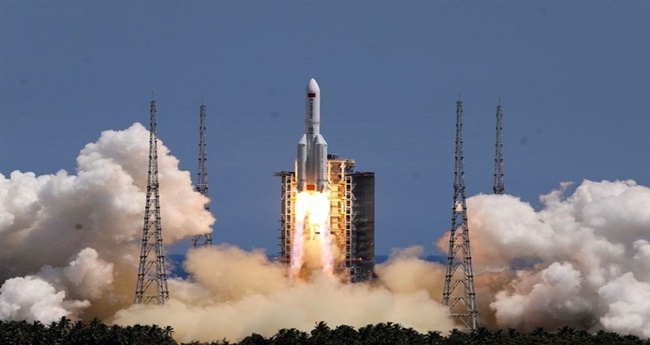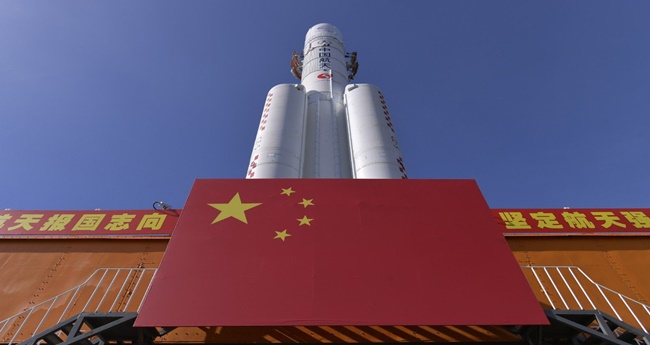Powerful China Rockets Engines Used for Future Missions to the Moon
China rockets are being tested for future missions to the moon, mars and beyond and declare that it was “completely successful”.
According to China’s space authorities, a Beijing space research center developed a new rocket engine that is twice as powerful as its American rival in the race to send the next astronaut to the moon.
The China Aerospace Science and Technology Corporation (CASC) reported on Tuesday that the ground test, which was conducted on Monday, was “completely successful.”
According to CASC, the engine will launch China’s still-in-development Long March 9 rockets and power astronauts on upcoming lunar missions.
The thrust produced by the upper-stage rocket engine, which is more than twice as powerful as the RL10 engine intended to return American men to the moon, is 25 tons. At great heights, upper-stage rocket engines provide an extra boost to help a spaceship reach its goal.

The “biggest closed expander cycle engine test run in history,” according to CASC, represents a “breakthrough” in the advancement of a crucial technology for heavy-duty launch vehicles.
For sending people into space, closed expander cycle rocket engines are the most effective propulsion system. The engines can use waste heat to convert a tiny amount of liquid hydrogen fuel into high-pressure gas.
In order to increase the pressure of oxygen and hydrogen in the fuel pumps, the gas powers turbines. The gas subsequently enters the combustion chamber’s top where it will be used as fuel.
According to the report of ABS-CBN News, the closed expansion cycle, which eliminates the need for additional fuel to power the pumps, is more effective than burning in conventional rocket engines.
The technology was developed with significant help from the US. Since the 1960s, RL10 engines have launched rockets. Also producing rocket engines with comparable or greater thrust are Russia and Europe.

Chu Baoxin, the head scientist of the engine project at the Beijing Aerospace Propulsion Institute, claims that it is challenging to increase the thrust of a closed expander cycle engine.
The engines must start and stop numerous times during a challenging mission, like a lunar landing. According to Chu’s team, the engine must continuously generate enough extra heat to transfer to the liquid hydrogen, convert it to gas, and accelerate the fuel pump to its usual operating speed as soon as possible. The pressure of the vaporized hydrogen can increase to exceptionally high levels and become challenging to control while the engine is operating at full power. The severity of these issues increases with engine size.
The Chinese rocket scientists claimed to have devised strategies for increasing thrust. According to a recent study by the researchers in the peer-reviewed Journal of Rocket Propulsion, they developed a unique heat exchanger made up of many rib-like components that can absorb heat from the surface of the combustion chamber and pass it to liquid hydrogen with unparalleled efficiency.
The components have a very smooth surface that can accelerate heat exchange considerably more quickly than conventional components because they were created using the most recent 3D printing technology.
According to the report, the researchers also created gas-powered fuel pumps with novel titanium alloys that can maintain high efficiency while operating in challenging circumstances.
Four of the new engines functioning together would be necessary to send Chinese astronauts to the moon, according to Chu. A new race to the moon is underway between China and the United States. By 2025, the Artemis program, which is run by NASA and has around 20 participating nations, plans to send American astronauts to the moon.
The Space Launch System, the most powerful China rockets ever built, is currently waiting for its much-delayed first flight in order to carry out the program. In order to construct an international research facility on the moon and send an astronaut there before the year 2030, China has partnered with Russia.
China is still developing its heavy-duty rocket for the lunar landing mission.
You may also visit: Titan, Saturn’s Moon, Has Unusual Molecule In Its Atmosphere
